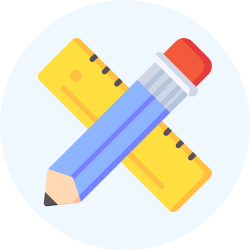Worksheet: Map and Globe | Be an Explorer 5: Book Solutions, Notes & Worksheets - Class 5 PDF Download
Q1: Multiple Choice Questions (MCQs).
(i) What did Ferdinand Magellan's expedition prove about the shape of the Earth?
(a) Flat
(b) Spherical
(c) Square
(d) Triangular
(ii) What does the word 'globe' mean in Latin?
(a) Square
(b) Round mass
(c) Flat
(d) Triangle
(iii) Why do we use a globe to study the Earth?
(a) It is easy to carry around
(b) It shows detailed geographical information
(c) It provides the correct shape of the Earth
(d) All of the above
(iv) What is the limitation of using a globe?
(a) It cannot show physical features
(b) It cannot be rotated
(c) It cannot show a part of the Earth
(d) It is too small
(v) Why can't a map show the correct shape of the Earth?
(a) Maps are flat
(b) Earth is too big
(c) Earth is spherical
(d) Maps cannot show details
Q2: Fill in the Blanks.
(i) __________ maps show physical features like mountains and rivers.
(ii) A person who makes maps is known as a __________.
(iii) Thematic maps focus on specific __________ information.
(iv) The four cardinal directions are __________, __________, __________, and __________.
(v) A scale on a map is a ratio between the distance on a map and the actual distance on the __________.
Q3: Match the Column.

 |
Download the notes
Worksheet: Map and Globe
|
Download as PDF |
Q4: True or False.
(i) Asia is the smallest continent.
(ii) The Atlantic Ocean is the largest and deepest ocean.
(iii) Antarctica remains covered with ice throughout the year.
(iv) South America is also known as Latin America.
(v) The Indian Ocean is not named after any country.
You can access the solutions to this worksheet here.
FAQs on Worksheet: Map and Globe - Be an Explorer 5: Book Solutions, Notes & Worksheets - Class 5
| 1. What are the main differences between a map and a globe? |  |
| 2. How do you read a map effectively? |  |
| 3. Why are maps important for learning geography? |  |
| 4. What types of maps are commonly used in education? |  |
| 5. How can students create their own maps? |  |




















